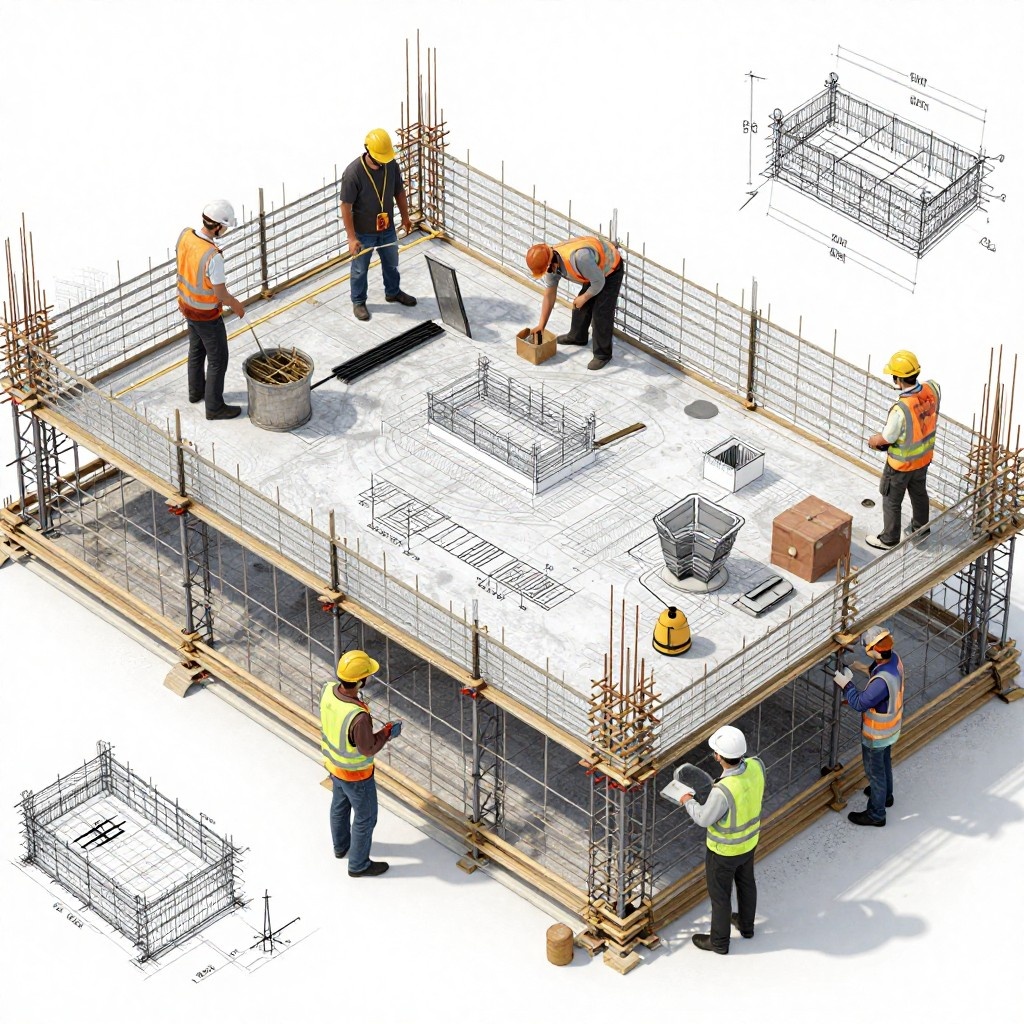AI has become a revolutionary force in the rapidly changing field of architecture, transforming the way architects plan, design, and construct buildings. AI's prowess in generating detailed images and solving practical problems at unparalleled speeds has positioned it as a powerful tool for architects, streamlining repetitive tasks and enhancing information processing.
The intermediate stage of AI development in architecture is marked by its proficiency in creating intricate designs and facilitating practical problem-solving computations. Architects now find themselves in a curatorial role, leveraging AI-generated options and pushing the boundaries of creativity. However, a crucial challenge lies in bridging the gap between AI's image-making capabilities and its ability to derive buildable schematics.
AI's impact on the industry raises concerns about the potential replacement of architects and designers. However, it's essential to recognize that AI is not designed to render architects obsolete. Instead, it acts as a collaborator, augmenting their capabilities by handling mundane tasks, speeding up decision-making processes, and reducing project costs.
As AI continues to advance, architects must harness its potential while preserving their unique ability to analyze situations, solve problems, and consider the nuanced needs of project end-users. The future of AI in architecture holds promise, with the technology likely to increase project efficiency, lower costs, and, in turn, elevate the demand for skilled architects. The symbiotic relationship between AI and architects is poised to redefine the industry, making way for groundbreaking designs and sustainable solutions.

Role of AI in Architecture
AI has become an invaluable asset in the field of architecture, leveraging its capabilities to boost productivity and creativity all the way through the design phase. Britannica defines AI as a computer system simulating reasoning, learning, and problem-solving, making it a potent tool for architects in handling repetitive tasks and processing information at remarkable speeds.
The widespread fear of AI replacing architects and designers looms large in the construction industry. However, it's crucial to recognize that AI, no matter how sophisticated, cannot replicate the nuanced skills of human architects. The ability to analyze situations, solve problems, and cater to the unique needs of end-users remains distinctly human—an irreplaceable facet that ensures AI remains a collaborator rather than a replacement.
AI's impact on project costs is undeniable, promising a future where groundbreaking projects break ground more frequently. While AI streamlines mundane design tasks and optimizes building-performance metrics, architects play a pivotal role in shaping the creative vision and considering the broader context of projects. The need for skilled architects is poised to rise as AI continues to revolutionize the industry.
From generating detailed images through text prompts to optimizing floor plans dynamically, AI is reshaping architectural workflows. The incorporation of generative AI, ranking variations based on user-defined metrics, signifies a paradigm shift in design possibilities. The evolution towards digital twins, empowered by AI, holds the promise of testing and refining models continually, shaping more efficient and sustainable building operations.
As AI transforms the architecture landscape, it is crucial to embrace it as a tool that augments human capabilities rather than replacing them. The synergy between AI and skilled architects heralds a future where innovation and creativity thrive in harmony.

AI's Impact on Design and Pre-Design Phases
AI's transformative impact on the design and pre-design phases of architecture is evident through groundbreaking tools like Midjourney and DALL-E 2. These AI-powered image generation tools empower architects to enhance creativity by swiftly transforming written prompts into captivating, photorealistic visuals. While they may not replace traditional visualizers, they play a pivotal role in conveying complex designs through engaging visual narratives, enabling architects to effectively showcase their vision to clients and stakeholders.
One of the most significant contributions of AI in this realm is its ability to drastically reduce the time required for design development. DALL-E 2, developed by OpenAI, exemplifies this by allowing architects to rapidly produce visuals based on simple prompts, turning concepts like "A skyscraper" into rendered masterpieces within just five minutes. This acceleration of the design process is revolutionary, streamlining what traditionally involved extensive client meetings, meticulous design revisions, and adherence to evolving building codes.
Moreover, AI's impact extends into the domain of BIM software. Tools like Finch collaborate seamlessly with BIM, enhancing the efficiency and accuracy of architectural design. Far from replacing architects, AI acts as a catalyst for innovation, unlocking new realms of creativity while navigating the complexities of regulations and client expectations. As architects embrace AI, they find themselves propelled into an era of unparalleled possibilities, where real-time generation of design variations and advancements in BIM software redefine the landscape of architectural design and pre-design phases.

AI in Urban Planning and Infrastructure
AI has emerged as a transformative force in the realm of Urban Planning and Infrastructure, reshaping traditional approaches with innovative tools like Delve, ARCHITEChTURES, and Autodesk Forma. Delve stands out by creating design options based on criteria such as budget, location, and size, employing machine learning to rank them for developers to choose the best design. The tool adapts and improves with experience, incorporating financial models and a utility model that continually updates to ensure energy efficiency and sustainability goals are met throughout the development process.
ARCHITEChTURES is an AI-powered web tool streamlining residential building design, providing architects with instant feedback on rule violations, material selection advice, cost estimation tools, and 3D visualizations. Autodesk Forma takes a holistic approach, leveraging AI's generative and iterative power to analyze urban-scale sites in real-time. Its user-friendly interface empowers architects and planners to integrate AI-powered environmental analyses from the inception of the design process, aligning projects with business goals and sustainability targets.
In the broader context of urban planning, AI assists planners in swiftly designing roads and city blocks by incorporating real-time data, local codes, and traffic patterns. This application of AI contributes to the realization of smart cities, characterized by cleanliness, space efficiency, and enhanced community opportunities. As planners optimize routes, streamline infrastructure planning, and reduce overall planning time with AI, the future of urban development is marked by unprecedented efficiency and innovation, laying the foundation for sustainable and smart urban landscapes.

The Future Trends and Predictions
Looking ahead, the integration of AI is expected to significantly impact architectural and design professionals. The technology, while powerful, cannot replace the inherent creativity and problem-solving capabilities of humans. The future lies in a collaborative approach where AI augments human skills, providing architects with data-driven insights and expediting repetitive tasks. AI's role is envisioned as a tool that enhances the decision-making process rather than a replacement for human professionals.
Future developments in AI for architecture may include more advanced simulation and modeling tools. These tools could provide architects with unprecedented capabilities to visualize and test designs in virtual environments, enabling more efficient iterations and optimizations. Additionally, the potential for AI in sustainable design and energy efficiency is immense. AI algorithms can analyze complex data sets related to environmental factors, energy consumption, and material efficiency, assisting architects in creating more eco-friendly and energy-efficient designs.

Conclusion: Collaboration for Innovation
In conclusion, the relationship between AI and architects is one of collaboration and augmentation. The transformative role of AI in architecture is not about replacing human professionals but enhancing their capabilities. As the integration of AI becomes more widespread, architects must adapt their skills to work in tandem with this evolving technology. The future promises a new era of innovation and creativity where AI serves as a powerful tool in building better homes and cities.
As the architectural landscape evolves, architects are urged to embrace AI as an opportunity rather than a threat. By staying informed, adapting to technological advancements, and leveraging AI as a collaborative partner, architects can shape a future where human ingenuity and artificial intelligence converge for unprecedented architectural excellence. The ostrich analogy no longer applies; architects are not burying their heads in the sand but actively designing the future of their profession, incorporating the advancements brought forth by AI.
FAQs:
How is AI used in architecture?
AI in architecture optimizes design processes, enhancing efficiency and precision. Utilizing AI tools for conceptualization, simulation, and analysis transforms architectural workflows, promoting innovation and sustainability.
Can AI replace architects?
While AI streamlines architectural tasks, it can't replace architects. AI complements their expertise by automating routine processes, enabling architects to focus on creativity, problem-solving, and delivering unique design solutions.
What is generative design for architecture?
Generative design in architecture leverages AI algorithms to explore countless design possibilities based on specified parameters. This innovative approach enhances creativity, optimizes spatial arrangements, and produces efficient, data-driven architectural solutions.




